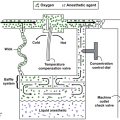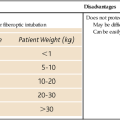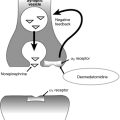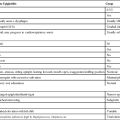Regional anesthesia and pain relief in children
Pharmacology
The potential for local anesthetic toxicity is increased in infants due to their reduced binding proteins (α1-acid glycoprotein), resulting in an increased concentration of free local anesthetic drug. Maximum recommended doses for commonly used local anesthetic agents are found in Table 196-1.
Table 196-1
Maximum Recommended Doses for Commonly Used Local Anesthetic Agents
| Drug | Dose (mg/kg) |
| Lidocaine* | 3.0 |
| Bupivacaine | 2.6 |
| Ropivacaine | 3.0 |
Specific techniques
Ilioinguinal/iliohypogastric nerve block
Indication
Ilioinguinal or iliohypogastric nerve blocks are used during hernia repairs and orchidopexy.






